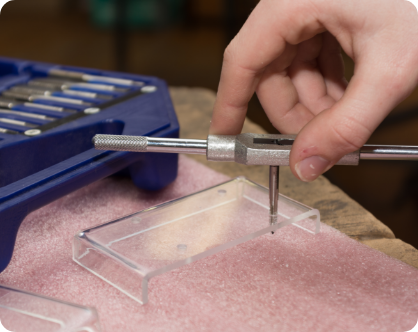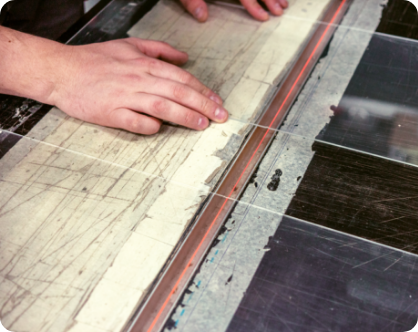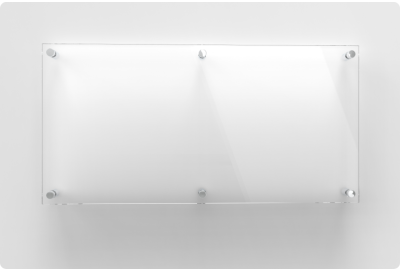So you've settled on plexiglass as the right plastic for your application. But now that you're ready to proceed with your project, you're faced with a new question: How to cut plexiglass without cracking it?
Also known as acrylic, it's not hard to work with — if you have the appropriate tools and follow the proper steps. This article will provide all the information you need about the best way to cut plexiglass. Read on to become a pro at cutting plexiglass sheets.
This guide will explore the advantages of plastic as a building material, focusing on its:

The Best Way to Cut Plexiglass
There is no one best way to cut plexiglass. But you have several options, depending on the tools you have available and the size of the sheet you're cutting. Whichever method you choose, the key is precision and patience. Let's take a closer look at some of the most popular methods of cutting acrylic (plexiglass).

Prep for Cutting Plexiglass Sheets
Before cutting plexiglass sheets, you must properly prepare for the project. Here are some steps to consider:
- Make sure you have a sturdy, clean work surface, free from debris that could mar the plexiglass.
- Gather the necessary tools, including a measuring stick and a dry-erase marker.
- Ensure that you have the best safety gear. Goggles and gloves are a must. If you're using power tools, you'll want ear protection and a mask, too.
- Leave the masking material on both sides of the plexiglass sheet intact.
- Using the dry-erase marker and measuring stick, mark off the area you want to cut.
How to Cut Plexiglass by Hand
If you're cutting plexiglass 1/8” thick or thinner in a straight line, you don't need to use power tools. To cut plexiglass by hand, you simply need your measuring stick and a box cutter or scoring knife. You can also buy a specialty plastic-cutting knife at your local hardware store. Then follow these steps:
- Place the measuring stick along the line you drew.
- Use your scoring knife or box cutter to make a shallow cut along the measuring stick.
- Continue making shallow cuts until you've nearly cut through the plexiglass. This could take as many as a dozen passes.
- Flip the plexiglass and score the opposite side.
- Place the sheet of plexiglass so that the cut lines up with the edge of the work surface.
- With a swift, firm motion, apply pressure to the side of the plexiglass hanging off the table. The plexiglass should break neatly into two pieces.

How to Cut Plexiglass With a Dremel
If you're cutting thin plexiglass in a complex shape, a Dremel may come in handy. To use a Dremel, you should:
- Clamp the plexiglass sheet to your work surface.
- Use a Dremel with a 561 set at speed six or eight.
- Make the cut slowly, wetting the cutting edge as you go along so the bit won't overheat and damage the plexiglass.
- Make several passes if necessary.
- Remove the clamps.
- Break the cut section off, cutting through the remaining masking material if needed.

How to Cut Plexiglass Using Power Tools
If you're wondering how to cut thick plexiglass sheets, a power tool is your best bet. Whether you use a table, circular, saber or jigsaw, you must select the right blade. Specialty plexiglass blades are available, but you can use any metal-cutting blade with carbide tips. Make sure the blade teeth are evenly spaced and have the same size and shape. Then you must:
- Clamp the plexiglass to your work surface.
- Cut slowly.
- Stop occasionally to cool the blade, or use water to ensure the blade won't overheat and damage the plexiglass.
Finishing Your Cut Edges
Once you're done cutting your plexiglass sheets, you'll notice the edges will still be rough. To finish your cut edges, you should:
- Wet sand the cut with 120-grit sandpaper.
- Continue sanding, working your way up to 600-grit sandpaper.
- Put a buffer attachment on a power drill and polish the edge.
Plexiglass Advantages
Now that we've discussed how to cut plexiglass sheets, let's take a quick look at the material itself. This plastic, technically called polymethylmethacrylate, is durable and shatter-resistant. Plexiglass's benefits include:
- High optical clarity: Plexiglass stands out for its high degree of transparency, rivaling even the clarity of traditional glass. This makes it especially suitable for applications where clear visibility is vital.
- High impact resistance: One of the most notable attributes of plexiglass is its ability to withstand impact. Being almost ten times more resistant than regular glass, it's a sought-after material in environments prone to accidents or external forces.
- Innate UV resistance and weatherability: Plexiglass possesses inherent resistance to harmful UV rays. Not only does this protect the material itself from yellowing or degrading, but it also provides a protective barrier for items or spaces behind it. Its weatherability ensures longevity even in fluctuating environmental conditions.
- Lightweight: The reduced weight of plexiglass compared to traditional glass makes it easier to handle, transport and install.
- Excellent dimensional stability: Plexiglass remains stable across a range of temperatures and conditions. It doesn't warp or lose its shape easily, ensuring its integrity in various settings, from frigid cold to sweltering heat.
Plexiglass Applications
Since you know how to cut acrylic (plexiglass), let's also look at the many uses of this plastic. With its versatile nature and numerous advantages, this material has become a favorite across a wide array of industries. Beyond its clear aesthetic appeal and durability, its multifaceted applications range from everyday household items to intricate industrial uses. Plexiglass applications include:
- Home and interior design: From furniture to staircase railings, these uses capitalize on plexiglass's aesthetic appeal and durability.
- Automotive and aviation: Its light weight and impact resistance make it a material of choice for vehicle and aircraft windows.
- Retail and display: Storefronts, display cases and signage benefit from its clarity and durability.
- Industrial: Machine guards, protective barriers and skylights in factories utilize its strength and chemical resistance.
- Weddings: Everything from dance floors to cake stands, invitations, seating assignments, signage and decor benefit from plexiglass's versatility.
There are even more applications for plexiglass, depending on the type you choose. Bullet-proof plexiglass is found in banks, convenience stores, cabs and other locations where security is a priority. Moisture-resistant mirrored plexiglass is used in gyms, ballet schools, locker rooms and other applications that benefit from its shatter resistance. Artwork, certificates, 3D objects, memorabilia and more are displayed in plexiglass framing that takes advantage of the material's innate clarity.
Frequently Asked Questions About How to Cut Plexiglass
The plexiglass sheet market is forecast to grow from $5.3 billion to $7.9 billion by 2026. As a player in that field, Regal Plastics has a wealth of knowledge to share about how to cut plexiglass. Read the following questions for the answers you need.
What Is the Best Tool to Cut Plexiglass?
What Is the Best Way to Cut Plexiglass at Home?
Can You Use a Box Cutter to Cut Plexiglass?
Trust Regal Plastics for All Your Plexiglass Needs
Now that we've gone over how to cut plexiglass and what tools you need, you're ready for the next step. Regal Plastics is the go-to source for plexiglass. We can help you identify the best material for your application. Plus, if you're uncomfortable cutting plexiglass sheets, we can cut them for you. We also offer other custom fabrication services, including assembly, bonding, edgework, CNC routing and high-end bending. Contact us today for the plexiglass and services you need.
REQUEST A QUOTE







